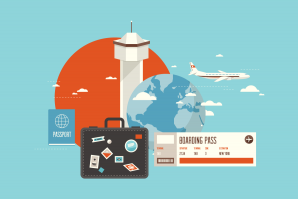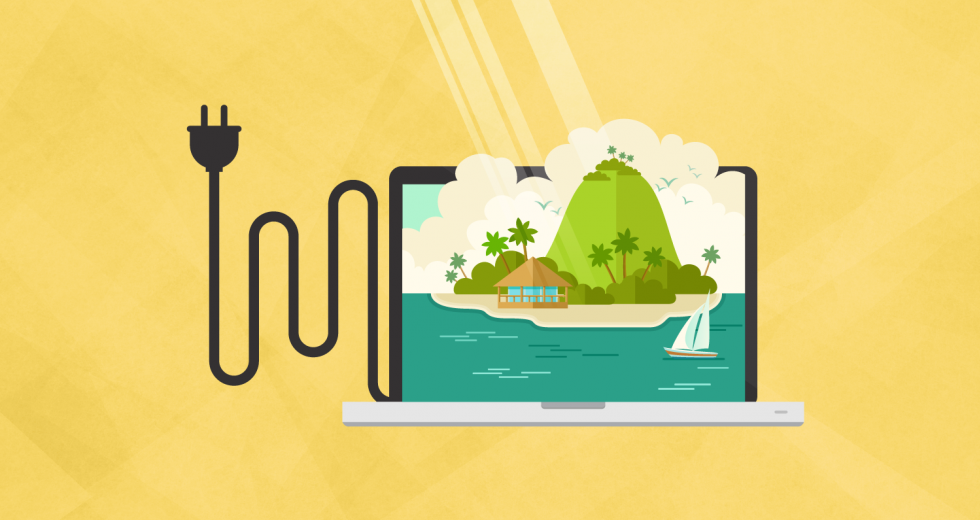We all deserve time off from the daily grind, even if we don’t get a traditional paid vacation. I’m looking at you, fellow freelancers.
We may have the freedom to take vacations at our own discretion — it’s part of the freelance appeal — but taking time off without impacting clients and projects requires some serious preparation, self-awareness and trial-and-error. See, there’s no standard vacation policy set in stone for freelancers. We’re kind of making it up as we go, which I see it as both a blessing (I make my own rules!) and a curse (if I don’t work then I don’t get paid!).
I’ve learned a lesson or two (or three) the hard way. Like this one time I had all projects wrapped up in a pretty little bow prior to a weeklong vacation to San Diego — the first big, out-of-town family trip with my husband and 10-month-old son — when a few consulting clients came to me with “urgent” I-need-this-by-yesterday requests (Of course, they weren’t actually all that urgent). I agreed to help and somehow ended up working nearly every day of my vacation, leaving my clients satisfied … and me feeling stressed, disappointed and frustrated.
What I’ve come to realize, after more than three years of adjusting my own freelance vacation policy, is that it varies freelancer to freelancer, vacation to vacation. Let me explain.
The Working Vacation
The working vacation is a planned trip knowing full well that you will be working, as usual, throughout the entire vacation. Have a sister in Ohio you want to visit for a week? Book the flights and plan to work normal or modified business hours just as you would if you were back at your home office.
Related: Freelance life: You can have a great one here
Bring the laptop to respond to emails and jam on projects as you see fit. You know your business best, so plan accordingly. In this case, it’s not necessary to notify clients that you’re taking a vacation as long as you’re sticking with working status quo. However, if you know you’re going to be unavailable or slower to respond to emails or phone calls, then warn clients and set your email vacation responder to “on.”
Bottom line: It’s a working vacation, which means you’ll be working while on vacation. Keep this expectation in mind while enjoying the freedom of working from anywhere. Want to spend less time working, more time on vacation? Schedule interviews a week in advance, submit projects early and get those to-dos checked off your list ahead of your trip.
The Off-the-Grid Vacation
The off-the-grid vacation is on the opposite side of the scale with no connection to your business or projects. Taking a 15-day unplugged backpacking trip across the country? Plan months in advance and come vacation, you’ll be ready to completely switch your mind from work mode to vacation mode.
Align project deadlines accordingly, notify clients ahead of time with a reminder here and there, set up your email vacation responder letting people know when you’ll be back in office, and take that unplugged time off with no or limited access to emails, text messages and phone calls.
Bottom line: Plan, plan, plan, as this is the only way you’ll be able to take an off-the-grid vacation. As a backup, offer priority projects a way to reach you in time of urgency or consider bringing on a colleague who can be made available if needed. A little insurance policy never hurt anyone, and it’ll help cover the bases.
The Standard Vacation
The standard vacation is somewhere in between the other vacations, and probably the most common. Taking a family trip to Hawaii for five days? Pack the sunscreen and must-read books, and work hard ahead of time to minimize working hours during your time away.
Bring your phone, and possibly even your laptop, with access to email and important project notes if needed. Plan to spend a limited amount of time per day responding to important emails and quickly check-in on projects to keep things running smoothly. Always notify clients ahead of time about your modified working hours and limited access to email to help mitigate communication expectations.
Bottom line: It’s up to you on how available you want to be to clients and how much time you want to spend working on projects during your vacation. Give yourself boundaries to abide by and stick by them. This way you’ll benefit from staying connected to work as needed, while also disconnecting to enjoy quality time away from the business.
As you plan for that next well-deserved time off — whether it’s a summer getaway, a mid-year trip, a holiday break or a one-day outdoor adventure — vacation like a freelance boss, making your vacation policy work for you and for your business.
Follow Cherise’s journey every month as she navigates the freelance life.
Recommended For You

3 Tips for Taking a Vacation
You’ll have to plan ahead to truly unplug
We often get so caught up in the planning of our time away that we fail to consider what needs to happen at the office while we’re gone. Make it as easy as possible for your team to cover essentials while you’re gone, and set yourself up for success upon your return

You Look Like You Need a Vacation
6 tips for checking out and kicking back
You just got back from a trip? Me too. And I already need the next one. My name is Christine Calvin, and I take vacations. That’s right, I use all my PTO every year, and I don’t feel an ounce of shame. You should do the same — it’s going to cost your company either way.



